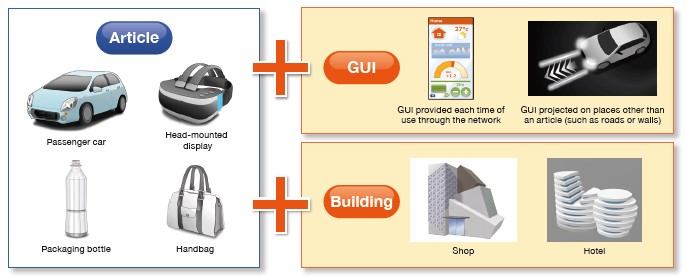Due to the partial revision of the Patent Act and Design Act which passed the Diet in 2019, and as we reported on our website (https://se1910.com/news/201905-patent-law-news/), the following changes will be implemented on and after April 1, 2020.
Ⅰ. Revision of the Patent Act
1. Calculation of damages caused by a patent infringement
Currently, it is not possible for a patentee to claim as damages a portion of the patent infringer’s profits which exceeds the patentee’s production capacity. According to the revised Patent Act, it will be assumed that the infringer had a license for said portion, and the patentee can claim damages corresponding to the license fee (Art. 102, Par. 1(2) of Patent Act).
(Source: https://www.jpo.go.jp/e/system/laws/rule/hokaisei/document/tokkyohoutou_kaiei_20190517/outline.pdf: “Outline of the Act” by the JPO)
For the calculation of the damages corresponding to the license fee, the court will consider a license fee which would have been negotiated on the presumption that there had been an infringement (i.e., possibly a higher license fee than that of a normal license agreement) (Art. 102, Par. 4 of Patent Act).
The same changes will also be made to the Utility Model Act, the Design Act and the Trademark Act.
Ⅱ Revision of the Design Act
1. Expansion of the scope of protection
Designs for graphical user interface (GUI) that are not stored or indicated on objects; e.g., images stored in a cloud and made available via a network or images projected on areas other than objects will be protected by the design right.
Also, designs for buildings such as museums or hotels, as well as interior designs will be protected as designs in order to encourage design investments which constitute a source of the company’s competitive advantage (Art. 2 and 8bis of Design Act).
(Source: “Revision of the Design Act in Japan – Contributing to innovation and branding – Revised in 2019” by the JPO)
2. Enhancement of the related design system (system that allows the registration of designs that are similar to a design (principal design) in one’s own design application or registered design) (Art. 10 of Design Act)
It will be possible to register multiple designs developed under a consistent concept. The new changes include the following:
(a) The time limit for filing related designs will be extended to 10 years from the filing date of the principal design (currently, it is only until disclosure of the registered principal design; i.e., about 8 months from the filing date of the principle design); and
(b) Registration of designs which are similar to related designs only will be possible.
(Source: “Revision of the Design Act in Japan – Contributing to innovation and branding – Revised in 2019” by the JPO)
3. Change in the duration of design rights
The term is extended from “20 years from the date of registration” to “25 years from the filing date” (Art. 21 of Design Act).
4. Clarification of the level of creativity
Shapes, patterns, etc., or images published or made available through the internet will be considered in the determination of the creativity of a design (Art. 3 of Design Act).
5. Introduction of a partial design for a set of articles
Registration of a partial design for a set of articles such as the handle of a knife, fork and spoon in a cutlery set will be allowed (Art. 2 and 8 of Design Act).
6. Expansion of indirect infringement acts
By defining subjective factors such as “the knowledge that an object can be used for the working of a registered design”, actions such as the manufacture and import of disassembled individual parts which may constitute infringing products can be controlled as an “indirect infringement” (Art. 38 of Design Act).
Please also take a look at the pamphlet issued by the JPO regarding the revision of the Design Act:
https://www.jpo.go.jp/e/resources/report/sonota-info/document/pamphlet/isho_kaisei_en.pdf
We will keep you updated regarding the above mentioned revisions. If you have any questions, please do not hesitate to contact us.






